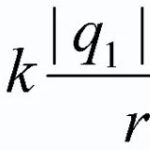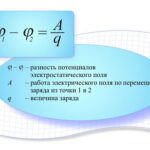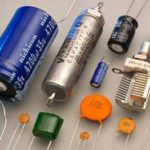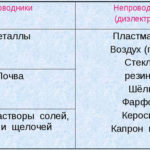Charges interact with each other in different media with different strengths as determined by Coulomb's law. The properties of these media are determined by a quantity called the dielectric permittivity.

Content
What is the dielectric permittivity
According to Coulomb's lawtwo point-like stationary charges q1 and q2 in a vacuum interact with the force given by the formula Fcl= ((1/4)*π* ε)*(|q1|*|q2|/r2), where:
- Fcl - Coulomb force, N;
- q1, q2 - modules of the charges, kl;
- r is the distance between the charges, m;
- ε0 - electrical constant, 8.85*10-12 F/m (Farad per meter).
If the interaction does not occur in a vacuum, the formula includes another quantity that determines the effect of the substance on the Coulomb force, and the notation of Coulomb's law looks like this:
F=((1/4)*π* ε* ε)*(|q1|*|q2|/r2).
This quantity is denoted by the Greek letter ε (epsilon), it is dimensionless (has no unit of measurement). The dielectric permittivity is the coefficient of attenuation of the interaction of charges in matter.
Often in physics the dielectric permittivity is used in conjunction with the electrical constant, in which case it is convenient to introduce the concept of absolute dielectric permittivity. This is denoted by εa and is equal to εa= ε* ε. In this case the absolute permeability has dimension F/m. The normal permeability ε is also called relative, to distinguish it from εa.
Nature of the dielectric permittivity
The nature of dielectric permittivity is based on the phenomenon of polarization under the action of an electric field. Most substances are generally electrically neutral, although they do contain charged particles. These particles are arranged chaotically in a mass of matter and their electric fields on average neutralize each other.
Dielectrics contain mostly bound charges (called dipoles). These dipoles conventionally represent bundles of two dissimilar particles, which are spontaneously oriented along the thickness of the dielectric and, on average, create zero electric field strength. Under the action of an external field, the dipoles tend to orient themselves according to the applied force. As a result, an additional electric field is created. Similar phenomena occur in non-polar dielectrics.
In conductors, the processes are similar, only there are free charges which separate under the action of an external field and also create their own electric field. This field is directed towards the external field, shielding the charges and reducing the force of their interaction. The greater the polarization capability of a substance, the higher ε.
Dielectric permittivity of different substances
Different substances have different dielectric permittivities. The value of ε for some of them is shown in Table 1. Obviously, these values are greater than unity, so the interaction of charges, compared to vacuum, always decreases. Also it is necessary to notice that for air ε is a little more than unity, therefore interaction of charges in air practically does not differ from interaction in vacuum.
Table 1. Values of electrical permeability for various substances.
| Substance | Dielectric permittivity |
|---|---|
| Bakelite | 4,5 |
| Paper | 2,0..3,5 |
| Water | 81 (at +20°C) |
| Air | 1,0002 |
| Germanium | 16 |
| Hetinax | 5..6 |
| Wood | 2,7...7,5 (various grades) |
| Ceramics radiotechnical | 10..200 |
| Mica | 5,7..11,5 |
| Glass | 7 |
| Textolite | 7,5 |
| Polystyrene | 2,5 |
| Polychlorvinyl | 3 |
| Fluoroplastic | 2,1 |
| Amber | 2,7 |
Capacitor dielectric constant and capacitance
Knowing the value of ε in practice is important, for example in the design of electrical capacitors. Their capacitance depends on the dimensions of the shells, the distance between them and the dielectric constant of the dielectric.

If you want to make a capacitor If the electrodes have a higher capacitance, then increasing the area of the covers leads to an increase in the size. There are also practical limitations on reducing the distance between the electrodes. In this case, the use of an insulator with increased dielectric constant can help. If a material with a higher ε is used, the size of the electrodes can be reduced many times, or the distance between them can be increased without loss of electrical capacitance.
A separate category of substances is called segmentelectrics, which under certain conditions have spontaneous polarization. In the field under consideration they are characterized by two things:
- large values of dielectric permittivity (characteristic values - from hundreds to several thousands);
- the ability to control the value of the dielectric permittivity by changing the external electric field.
These properties are used to manufacture capacitors of high capacity (due to increased dielectric permittivity of the insulator) with small mass and dimensions.
Such devices work only in low-frequency AC circuits - with increasing frequency their dielectric constant decreases. Another application of ferroelectrics is variable capacitors, whose characteristics change under the influence of the applied electric field with varying parameters.
Dielectric permittivity and dielectric losses
Dielectric losses, that is, the part of the energy that is lost in the dielectric to heat, also depend on the dielectric constant. The parameter tg δ, the tangent of the angle of dielectric losses, is commonly used to describe these losses. It characterizes the power of dielectric losses in a capacitor in which the dielectric is made of a material with a tg δ. And the specific power of loss for each substance is defined by the formula p=E2*ώ*ε*ε*tg δ, where:
- p - specific power of losses, W;
- ώ=2*π*f - circular frequency of electric field;
- E - electric field strength, V/m.
Obviously, the higher the dielectric permittivity, the higher the losses in the dielectric, all other conditions being equal.
Dependence of dielectric permittivity on external factors
It should be noted that the value of the dielectric permittivity depends on the frequency of the electric field (in this case, the frequency of the voltage applied to the facings). As the frequency increases, the value of ε in many substances decreases. This effect is pronounced for polar dielectrics. This phenomenon can be explained by the fact that the charges (dipoles) no longer have time to follow the field. For substances characterized by ionic or electronic polarization, the dependence of dielectric permittivity on frequency is small.
This is why the selection of materials to make a capacitor dielectric is so important. What works at low frequencies will not necessarily produce quality insulation at high frequencies. More often than not, non-polar dielectrics are used as an insulator at high frequencies.
Also, dielectric constant depends on temperature, and it varies from substance to substance. In non-polar dielectrics, it drops with increasing temperature. In this case, for capacitors made with such an insulator, we speak of a negative temperature coefficient of capacitance (TKE) - the capacitance falls with increasing temperature following ε. Other substances have a higher permeability with increasing temperature, and it is possible to obtain capacitors with a positive TKE. By pairing capacitors with opposite TKEs, a thermostable capacitance can be obtained.
Understanding the essence and knowledge of the dielectric constant of various substances is important for practical purposes. And the ability to control the level of dielectric permittivity provides additional technical perspectives.
Related articles:






